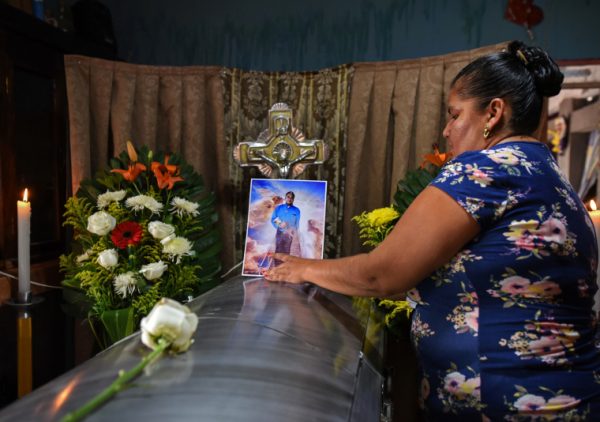Mexican Reporter Julio Valdivia Beheaded in Veracruz

HAVANA TIMES – Mexican authorities must immediately undertake a thorough and credible investigation into the killing of journalist Julio Valdivia and bring the perpetrators to justice, the Committee to Protect Journalists said today.
The body of Valdivia, a reporter for the local El Mundo newspaper, was found yesterday afternoon in the municipality of Tezonapa, in the eastern Mexican state of Veracruz, according to news reports.
Valdivia’s body, which had been beheaded, was found near train tracks in the town of Motzorongo at about 2:30 p.m., according to one of the journalist’s colleagues who spoke to CPJ on the condition of anonymity, because they were not authorized by the newspaper to speak on the matter.
The Veracruz state prosecutor’s office had not yet issued an official statement about the case on its website or social media accounts as of today, but investigators told Animal Político, a Mexico City news website, that they had ruled out an accident. CPJ called the prosecutor’s office several times, but no one answered. During a press conference today in Mexico City, President Andrés Manuel López Obrador urged authorities to investigate the case, according to news reports.
“The shockingly brutal killing of Julio Valdivia only strengthens Veracruz’s status as not just the most violent state for journalists in Mexico, but as the deadliest region for journalists in all of the Americas,” said Jan-Albert Hootsen, CPJ’s Mexico representative. “Federal and state authorities cannot stand idly by and continue to allow Veracruz’s vicious cycle of impunity and violence against in the press.”
Valdivia spoke with CPJ on Wednesday
Yesterday, Valdivia told the colleague who spoke with CPJ that he was leaving his residence on a motorcycle provided to him by the newspaper to report on a story in Tezonapa, but did not specify the subject of the story.
The news reports on Valdivia’s killing said the reporter had received death threats recently but did not provide more details. Valdivia’s colleague told CPJ that other staffers at the paper told him that Valdivia had received threats, but said he was unaware of the details.
Valdivia, 41, joined El Mundo in 2014 and was the regional correspondent for the newspaper in Tezonapa, covering a broad range of issues, his colleague said, adding that Valdivia’s most recent reporting was heavily focused on crime and security.
“The border region between Veracruz and Oaxaca is a very complicated place to report on,” the colleague told CPJ. “There are gangs involved in drug trafficking and oil theft and a lot of people have been killed there recently.”
Tezonapa has seen a significant spike in deadly violence this year, mostly related to clashes between criminal gangs, which have resulted in the deaths of several local sugar cane farmers, according to news reports.
El Mundo does not include bylines for stories that could risk the correspondent’s safety, Valdivia’s colleague said. The colleague referred CPJ to recent stories about Tezonapa, including articles about police raids in bars and the disappearance of a young man, which he said were likely written by Valdivia.
Valdivia’s photos were published on Tuesday by El Mundo
On September 8, El Mundo’s Facebook page posted a report with video images credited to Valdivia about a shootout in Cosolapa, a town near Tezonapa in Veracruz’s neighboring state of Oaxaca.
Several telephone calls by CPJ to reach the editors of El Mundo for comment yesterday and this morning remain unanswered.
In a statement sent yesterday to CPJ via WhatsApp message, the State Commission for Attention to and Protection of Journalists, an autonomous Veracruz government agency, said that it had not been made aware of any threats against Valdivia’s life. The Federal Mechanism for the Protection of Human Rights Defenders and Journalists, which operates under the auspices of the federal Interior Secretariat in Mexico City, condemned the killing in a statement released earlier today, adding that Valdivia was not enrolled in a federal protection program for reporters.
Mexico is the most dangerous country for journalists in the Western Hemisphere. At least three journalists have been murdered in the country in 2020 in direct relation to their work, according to research by CPJ, which is investigating a fourth killing to ascertain the motive. On March 30 of this year, journalist Maria Elena Ferral was murdered in Veracruz.





